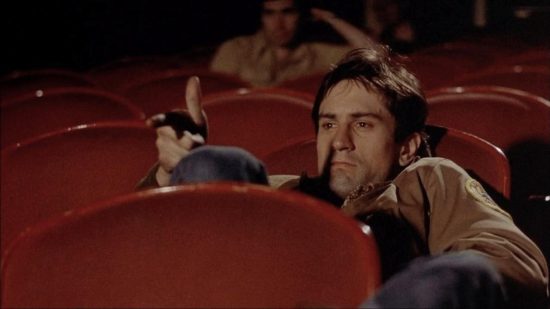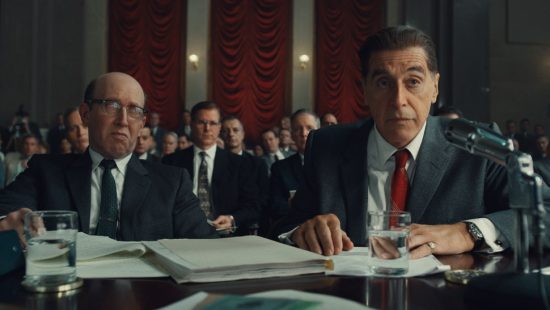Scorsese, Marvel and the Cinema of Attractions
It’s not for me to argue about cinema with Martin Scorsese. That would be like arguing the fundamentals of physics with Einstein or the intricacies of an upcoming surgery with my doctor. They know more than I do, so I should just shut up and let them be the authority on the matter. However, Scorsese’s recent comments to Empire magazine have caused a bit of a debate among filmgoers. In an interview, he likened Marvel superhero movies to theme parks and claimed that they’re “not cinema.” Normally, when Scorsese says anything about what is or isn’t cinema, I nod along and perhaps take notes. But here- and I shake as I write this- I think he’s wrong.
It’s time to come clean. I have never seen a Marvel movie. Not since I was a child watching Tobey McGuire flying around New York as Spider-Man, at least. They do not particularly interest me. I don’t have anything against them philosophically, but I wouldn’t choose to devote my time and energy towards things not to my taste. They seem loud, brash and all spectacle. I can’t speak with any authority. Like I admit, I’ve not seen one. But if it is true that they privilege spectacle above all else, this does not mean they are not cinema. Quite the opposite. They are, for that very reason, in tune with the very earliest films.
In his famous essay ‘The Cinema of Attractions: The Early Film, its Spectator and the Avant-Garde’, Tom Gunning argues that the earliest films, from the late nineteenth century to 1906, were not about telling stories but rather were about spectacle. They were, as his title suggests, a cinema of attractions. Shown in carnivals and exhibitions, these films were “less as a way of telling stories than as a way of presenting a series of views to an audience, fascinating because of their illusory power… and exoticism.”
The purpose of these films was not to tell a story but rather to captivate the audience with its images. What was important was not what the images meant but what the images were. As Gunning writes, “the cinema of attractions directly solicits spectator attention, inciting visual curiosity, and supplying pleasure through an exciting spectacle- a unique event, whether fictional or documentary, that is of interest in itself.” They did not need a story. The images were the story.
It seems odd, therefore, to deride popular films such as Marvel’s superhero movies as being inherently lesser due to their favouring of spectacle. Instead, the opposite should be true. If the earliest films were meant to excite and to thrill, Marvel is performing cinema’s core duty.
The analogy does not go all the way. In his article, Gunning argues that after 1906, when story took over as the main driver of the movies, spectacle was still present “as a component of narrative films.” In other words, in films where the narrative is dominant but the spectacle is deployed in service to that narrative, rather than as the main attraction itself. I think this is closer to our contemporary superhero film. The fights and flights aren’t just for our pleasure of watching them fight and fly; they’re saving the world in the process.
Scorsese, in his derision of Marvel films not being cinema, likened them to theme parks. But the cinema can be the theme park. This, I believe, is what sets the cinema apart from the novel or the painting; it’s potential to excite, to thrill, to engage with such ferocity to be compared to a theme park is what makes film the magical art form that it is. After all, the cinema started in the nineteenth century equivalent to the theme park.
Scorsese has presented a tinted version of film history before. His 2011 film Hugo beautifully depicts the fascination and beauty of film history, but overlooked the fundamentals of cinema’s origins. In one scene, the two lead children read a book on the history of cinema. In it, film history is described thusly: “What began as a sideshow novelty soon grew into something more, when the first filmmakers discovered they could use the new medium to tell stories.” Scorsese is certainly right to portray the earliest films as sideshow novelties and to coincide their ascension in the popular imagination with the adoption of narratives. However, he is still implying a fundamentally misleading vision of film history: the new technologies and their spectacles were not in place waiting to be replaced by narratives. The spectacle was the spectacle.
To justify his “not cinema” statement, Scorsese reasoned that Marvel “isn’t the cinema of human beings trying to convey emotional, psychological experiences to another human being.” Scorsese may not have felt an emotional or psychological response to these films, but he can only speak for himself and nobody else. It’s especially galling to deride them as not being cinema while at the same time admitting that you’ve stopped watching them. They’re not to his taste; join the club, Martin. But neither he nor I can speak for the emotional responses of the rest of the world, especially to films with audiences as vast as Marvel’s.
The films of the late nineteenth and early twentieth century were meant to amaze, to show the audience something they had never seen before. Even if that something was a commonplace occurrence (a man waving; a woman sitting in a train carriage; children running down the street), the fact that audiences were seeing these sights as projections and not as reality made them spectacular. In doing so, audiences forged an emotional bond with what they were seeing. We are no longer exhilarated by seeing people move on a screen. So in order to feel thrilled- to match that feeling of thrill those first audiences in the nineteenth century must have felt- films have to innovate and show us something we’ve never seen before, something hitherto capable only in our dreams. I’m not saying every Marvel movie does this successfully. But their attempts at such do not discredit them from being cinema; it is what makes them fundamentally cinematic. After all, what is to watch a film if not to marvel.
You can follow me on Twitter.
For another take on the subject, you can read Chris’ article.













